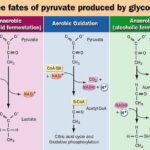AS and A Level Biology 36 Views 1 Answers
Sourav PanLv 9October 29, 2024
Interpret photomicrographs, diagrams and microscope slides of cells in different stages of the mitotic cell cycle and identify the main stages of mitosis
Interpret photomicrographs, diagrams and microscope slides of cells in different stages of the mitotic cell cycle and identify the main stages of mitosis
Please login to save the post
Please login to submit an answer.
Sourav PanLv 9May 15, 2025
When observing photomicrographs, diagrams, or microscope slides of cells undergoing mitosis, you can identify the main stages of the mitotic cell cycle by recognizing specific characteristics in each stage. Here’s how to interpret and identify the stages:
1. Prophase
- Characteristics: Chromosomes condense and become visible as paired chromatids joined at the centromere. The nuclear membrane begins to disintegrate, and the nucleolus disappears.
- Microscope Clues: Look for thick, thread-like chromosomes dispersed throughout the cell, with a faded or absent nuclear membrane.
2. Metaphase
- Characteristics: Chromosomes align at the cell’s equatorial (metaphase) plate, with spindle fibers attaching to the centromeres of each chromosome from opposite poles.
- Microscope Clues: Chromosomes are lined up in a single plane across the center of the cell, forming a clear line along the middle.
3. Anaphase
- Characteristics: Sister chromatids separate at the centromeres and are pulled by spindle fibers toward opposite poles of the cell.
- Microscope Clues: Chromatids appear as two groups moving toward opposite ends of the cell, with visible space between them and the cell center.
4. Telophase
- Characteristics: Chromatids reach the cell poles and begin to decondense back into less visible chromatin. The nuclear membrane re-forms around each new nucleus, and the nucleolus reappears.
- Microscope Clues: Two distinct nuclear areas are forming at opposite ends of the cell, with chromosomes becoming less distinct.
5. Cytokinesis (not a part of mitosis but often observed)
- Characteristics: The cytoplasm divides, resulting in two daughter cells with identical genetic material.
- Microscope Clues: A cleavage furrow (in animal cells) or a cell plate (in plant cells) forms, completing the physical separation into two cells.
Identifying these stages requires observing the chromosomes’ arrangement and changes to the nuclear membrane, helping to distinguish each step in the mitotic cycle.
0
0 likes
- Share on Facebook
- Share on Twitter
- Share on LinkedIn
0 found this helpful out of 0 votes
Helpful: 0%
Helpful: 0%
Was this page helpful?




